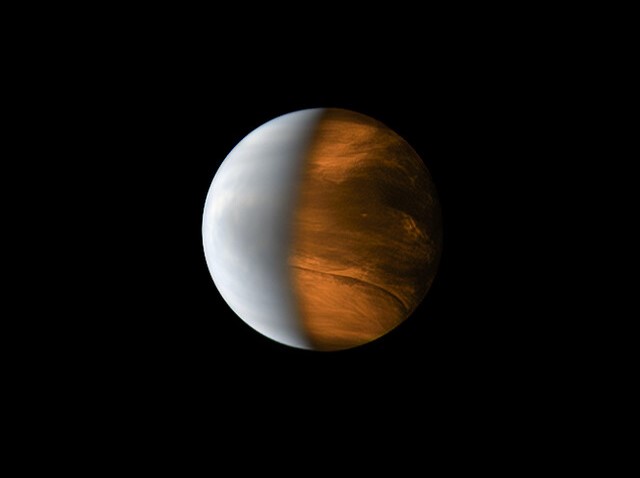
Oxygen makes up roughly 21% of the air on Earth, while most of our air is filled with nitrogen. Nearly all living creatures, including us humans, rely on oxygen to stay alive. However, it’s a whole different ballgame on Venus.
Venus has thick and unpleasant air, and 96.5% of it is carbon dioxide. There’s a bit of nitrogen and some other tiny gases, but oxygen is almost nowhere to be found. Surprisingly, scientists haven’t paid as much attention to Venus as they have to other planets like Mars, which makes it tough to directly spot any oxygen on Venus.
Discovery of atomic oxygen in Venus’s atmosphere
For the first time, oxygen was directly detected on the side of Venus facing the sun, where it is produced in the atmosphere, as well as on the side facing away from the sun, where it had previously been detected by a ground-based telescope in Hawaii.
Scientists have used a special tool on the SOFIA airborne observatory, a modified Boeing 747SP plane with an infrared telescope. This observatory is a collaboration between NASA and the German Aerospace Center.
It’s important to know that this atomic oxygen is not the same as the oxygen we breathe. Our air has molecular oxygen, which has two oxygen atoms together.
The lead author of the study, Heinz-Wilhelm Hubers, who is a physicist at the German Aerospace Center, explained that Venus’s makeup is quite different from Earth’s.
Atmosphere of Venus
The atmosphere on Venus, which is the second planet from the sun, traps heat in a way that’s similar to a runaway greenhouse effect.
The oxygen on Venus’s daytime side is created when the sun’s ultraviolet radiation breaks down carbon dioxide and carbon monoxide in the atmosphere, forming oxygen atoms and other substances. The winds carry some of this oxygen to Venus’s nighttime side.
As Helmut Wiesemeyer, an astrophysicist and one of the study’s authors from the Max Planck Institute for Radio Astronomy in Germany, explained, “This detection of atomic oxygen on Venus is direct proof for the action of photochemistry – triggered by solar UV radiation – and for the transport of its products by the winds of Venus’ atmosphere.”
He mentioned that on Earth, we have the stratospheric ozone layer, which is a well-known example of this kind of photochemistry.
More details about the oxygen discovered on Venus
Venus has a layer of clouds containing sulfuric acid that extends up to approximately 40 miles (about 65 kilometers) above its surface. Within this layer, there are powerful hurricane-like winds that blow in the opposite direction of the planet’s spin.
At about 75 miles (around 120 kilometers) above the surface, there are strong winds that move in the same direction as Venus rotates.
NEWS🚨: Astronomers just detected oxygen in the Venus’s atmosphere on both its day and night sides pic.twitter.com/J1G0MD5OdQ
— Amazing Astronomy (@MAstronomers) November 9, 2023
The recently discovered oxygen is concentrated between these two intense layers, at an altitude of roughly 60 miles (approximately 100 kilometers) above the planet’s surface.
The temperature of this oxygen varies from about minus 184 degrees Fahrenheit (equivalent to minus 120 degrees Celsius) on the sunny side of the planet to as low as minus 256 degrees Fahrenheit (about minus 160 degrees Celsius) on the dark side of Venus.
Previous researches on Venus
Previously, scientists used indirect methods to find oxygen on Venus’s daytime side. They relied on measurements of other molecules along with photochemical models.
Venus is a bit smaller than Earth, with a diameter of approximately 7,500 miles (or 12,000 kilometers). In our solar system, Earth is comfortably situated in the “habitable zone” around the sun. This zone is the right distance from a star to potentially support life. Venus is close to the inner edge of this zone, and Mars is near the outer edge.
Mr. Hubers pointed out, “We are still at the beginning of understanding the evolution of Venus and why it is so different from Earth.”
See all the latest news from Greece and the world at Greekreporter.com. Contact our newsroom to report an update or send your story, photos and videos. Follow GR on Google News and subscribe here to our daily email!



